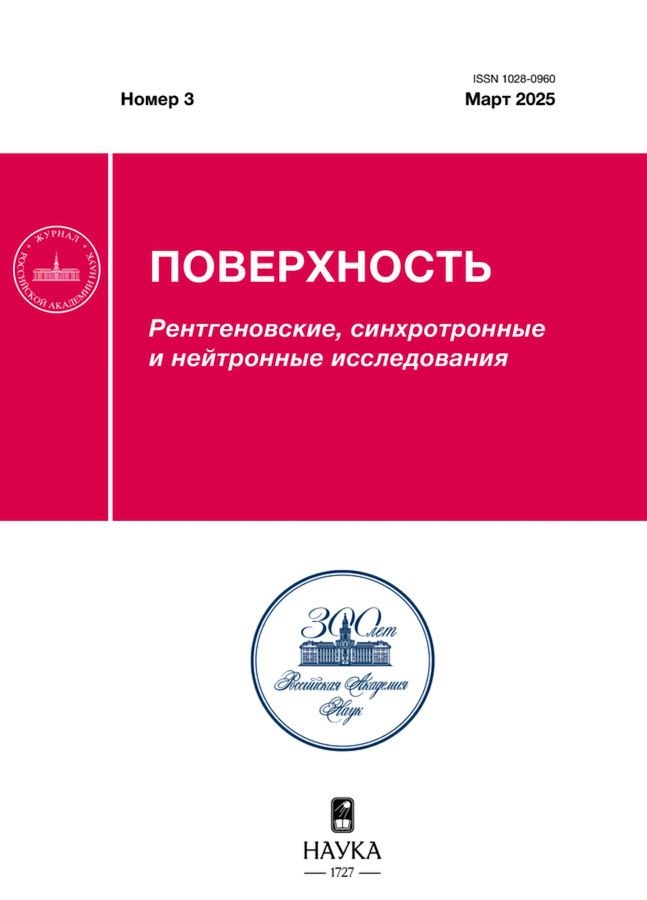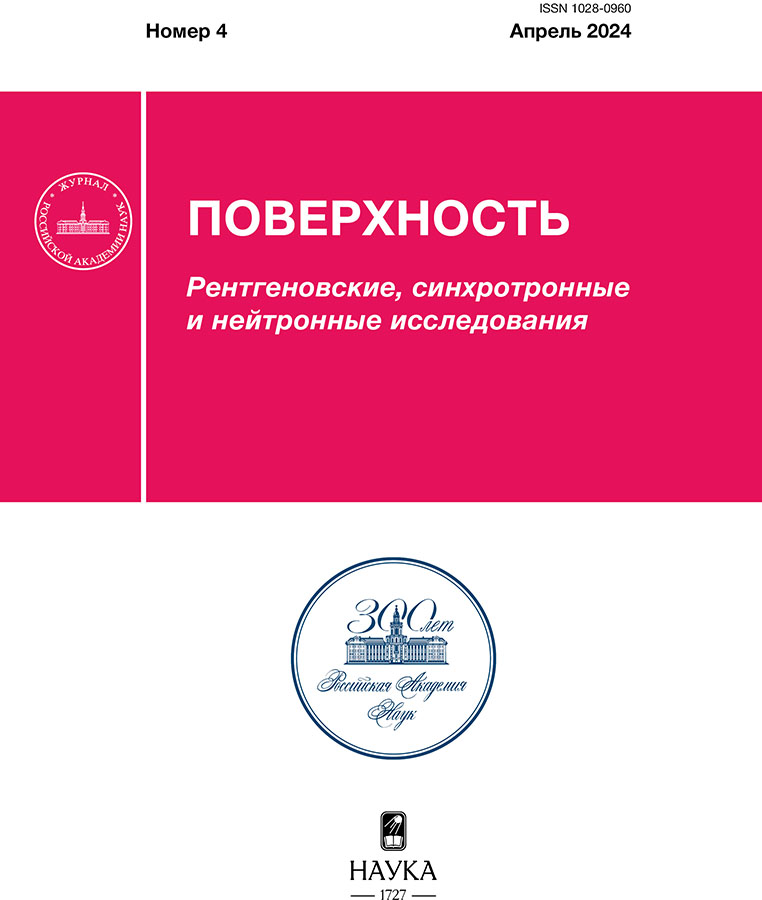Изменение оптических свойств покрытий на основе полых частиц ZnO/SiO2 при облучении электронами
- Авторы: Дудин А.Н.1, Юрина В.Ю.1, Нещименко В.В.1, Михайлов М.М.1,2, Юрьев С.А.1,2, Лапин А.Н.2
-
Учреждения:
- Амурский государственный университет
- Томский государственный университет управления и радиоэлектроники
- Выпуск: № 4 (2024)
- Страницы: 51-56
- Раздел: Статьи
- URL: https://ter-arkhiv.ru/1028-0960/article/view/664656
- DOI: https://doi.org/10.31857/S1028096024040068
- EDN: https://elibrary.ru/GJKVHD
- ID: 664656
Цитировать
Полный текст
Аннотация
Проведен сравнительный анализ спектров диффузного отражения и их изменений после облучения электронами с энергией 30 кэВ покрытий на основе полиметилфенилсилоксановой смолы и порошков-пигментов двухслойных полых частиц ZnO/SiO2. Анализ проведен in situ в области 250–2500 нм. Облучение образцов осуществляли в установке-имитаторе условий космического пространства “Спектр”. Радиационную стойкость исследуемых покрытий на основе двухслойных полых частиц ZnO/SiO2 оценивали относительно покрытий на основе поликристаллов ZnO, анализируя разностные спектры диффузного отражения, полученные вычитанием спектров после облучения из спектров необлученных образцов. Установлено, что интенсивность полос наведенного поглощения в покрытиях на основе полых частицах ZnO/SiO2 меньше, чем в покрытиях на основе микрочастиц ZnO, а радиационная стойкость при оценке изменения интегрального коэффициента поглощения солнечного излучения (ΔαS) в два раза больше. Увеличение радиационной стойкости, вероятно, определяется различной природой накопления дефектов: в случае объемных микрочастиц радиационные дефекты могут накапливаться внутри зерна, у полых частиц накопление дефектов может происходить только в пределах тонкой оболочки сферы.
Полный текст
Об авторах
А. Н. Дудин
Амурский государственный университет
Email: viktoriay-09@mail.ru
Россия, 675027, Благовещенск
В. Ю. Юрина
Амурский государственный университет
Автор, ответственный за переписку.
Email: viktoriay-09@mail.ru
Россия, 675027, Благовещенск
В. В. Нещименко
Амурский государственный университет
Email: viktoriay-09@mail.ru
Россия, 675027, Благовещенск
М. М. Михайлов
Амурский государственный университет; Томский государственный университет управления и радиоэлектроники
Email: viktoriay-09@mail.ru
Россия, 675027, Благовещенск; 634050, Томск
С. А. Юрьев
Амурский государственный университет; Томский государственный университет управления и радиоэлектроники
Email: viktoriay-09@mail.ru
Россия, 675027, Благовещенск; 634050, Томск
А. Н. Лапин
Томский государственный университет управления и радиоэлектроники
Email: viktoriay-09@mail.ru
Россия, 634050, Томск
Список литературы
- Wang Y., Sunkara B., Zhan J., He J., Miao L., McPherson G.L., John V.T., Spinu L. // Langmuir. 2012. V. 28. P. 13783. https://www.doi.org/10.1021/la302841c
- Yan Y., Li A., Lu C., Zhai T., Lu S., Li W., Zhou W. // Chem. Engin. J. 2020. V. 396. P. 125316. https://www.doi.org/10.1016/j.cej.2020.125316
- Li C., Liang Z., Xiao H., Wu Y., Liu Y. // Mater. Lett. 2010. V. 64. № 18. P. 1972. https://www.doi.org/0.1016/j.matlet.2010.06.027
- Rasmidi R., Duinong M., Chee F.P. // Radiat. Phys. Chem. 2021. V. 184. P. 109455. https://www.doi.org/10.1016/j.radphyschem.2021.109455
- Li C., Mikhailov M.M., Neshchimenko V.V. // Nucl. Instrum. Methods Phys. Res. B. 2014. V. 319. P. 123. https://www.doi.org/10.1016/j.nimb.2013.11.007
- Belov A., Mikhaylov A., Korolev D., Guseinov D., Gryaznov E., Okulich E., Sergeev V., Antonov I., Kasatkin A., Gorshkov O., Tetelbaum D., Kozlovski V. // Nucl. Instrum. Methods Phys. Res. B. 2016. V. 379. P. 13. https://www.doi.org/10.1016/j.nimb.2016.02.054
- Bhatia S., Verma N. // Mater. Res. Bull. 2017. V. 95. P. 468. https://www.doi.org/10.1016/j.materresbull.2017.08.019
- Singh V.P., Das D., Rath C. // Mater. Res.h Bull. 2013. V. 48. № 2. P. 682. https://www.doi.org/10.1016/j.materresbull.2012.11.026
- Wang Z.G., Zu X.T., Zhu S., Wang L.M. // Physica E. 2006. V. 35. № 1. P. 199. https://www.doi.org/10.1016/j.physe.2006.07.022
- Spallino L., Spera M., Vaccaro L., Agnello S., Gelar- di F.M., Zatsepin A.F., Cannas M. // Appl. Surf. Sci. 2017. V. 420. P. 94. https://www.doi.org/10.1016/j.apsusc.2017.05.082
- Amosov A.V., Dzyuba V.P., Kulchin Yu.N., Storozhen- ko D.V. // Phys. Procedia. 2017. V. 86. P. 61. https://www.doi.org/10.1016/j.phpro.2017.01.021
- Singh S.K., Kumar A., Singh S., Kumar A., Jain A. // Silicon. 2021. V. 38. № 5. P. 2861. https://www.doi.org/10.1016/j.matpr.2020.09.137
- Chen J., Yu Y., Xiu H., Feng A., Mi L., Yu Y.// Ceram. Int. 2022. V. 48. № 19. P. 28006. https://www.doi.org/10.1016/j.ceramint.2021.09.155
- Neshchimenko V.V., Li C., Mikhailov M.M. // Dyes and Pigments. 2017. V. 145. P. 354. https://www.doi.org/10.1016/j.dyepig.2017.03.058
- Neshchimenko V.V., Li C., Mikhailov M.M., Lv J. // Nanoscale. 2018. V. 10. № 47. P. 22335. https://www.doi.org/10.1039/C8NR04455D
- Mikhailov M.M., Yuryev S.A., Lapin A.N., Goronch- ko V.A. // Ceram. Int. 2023. V. 49. № 12. P. 20817. https://www.doi.org/10.1016/j.ceramint.2023.03.214
- Дудин А.Н., Нещименко В.В., Ли Ч. // Поверхность. Рентген., синхротр. и нейтрон. исслед. 2022. № 4. С. 70. https://www.doi.org/10.31857/S1028096022040069
- Kositsyn L.G., Mikhailov M.M., Kuznetsov N.Y., Dvoretskii M.I. // Instrum. Exp. Tech. 1985. V. 28. P. 929.
- Johnson F.S. // J. Meteorological. 1954. V. 11. № 6. P. 431.
- ASTM E490-00a Standard Solar Constant and Zero Air Mass Solar Spectral Irradiance Tables. 2019.
- ASTM E903-96 Standard Test Method for Solar Absorptance, Reflectance, and Transmittance of Materials Using Integrating Spheres. 2005.
- Agostinelli S., Allison J., Amako K., Apostolakis J., Araujo H., Arce P., Asai M., Axen D., Banerjee S., Barrand G., Behner F., Bellagamba L., Boudreau J., Broglia L., Brunengo A., Burkhardt H., Chauvie S., Chuma J., Chytracek R., Cooperman G. // Nucl. Instrum. Methods Phys. Res. A. 2003. V. 506. P. 250. https://www.doi.org/10.1016/S0168-9002(03)01368-8
Дополнительные файлы

















